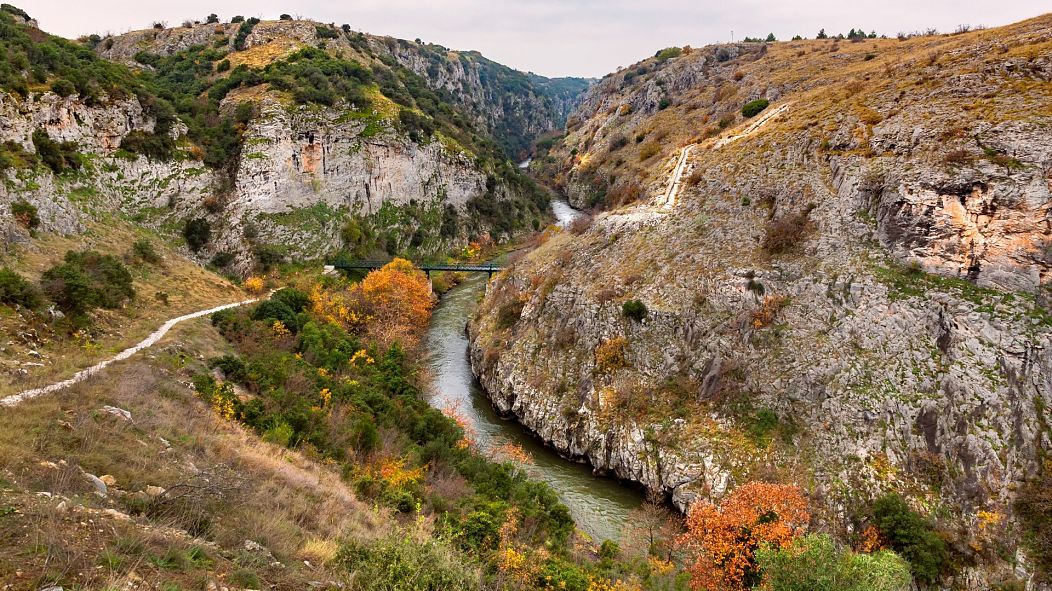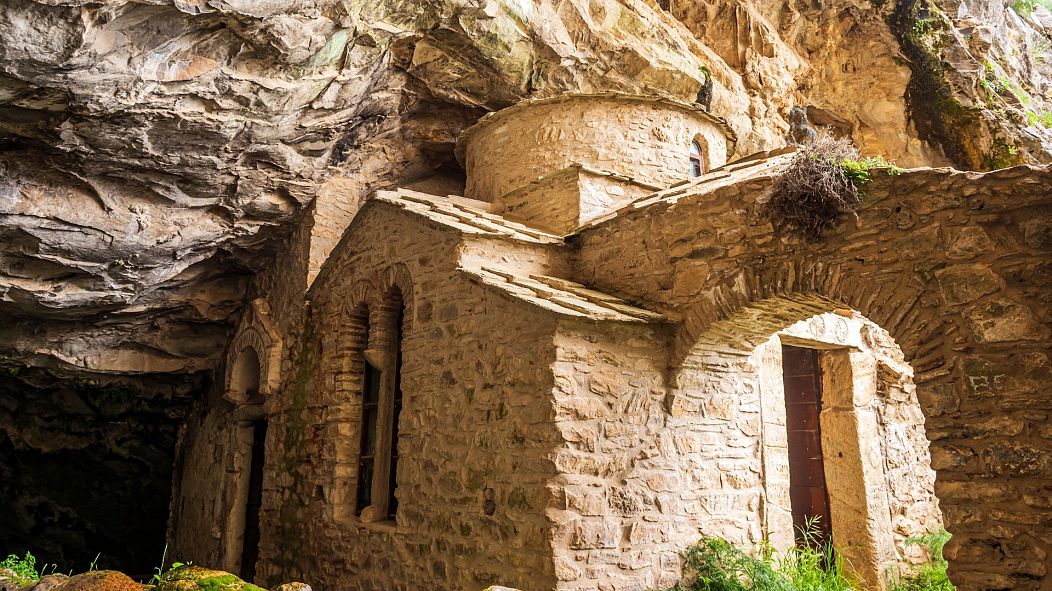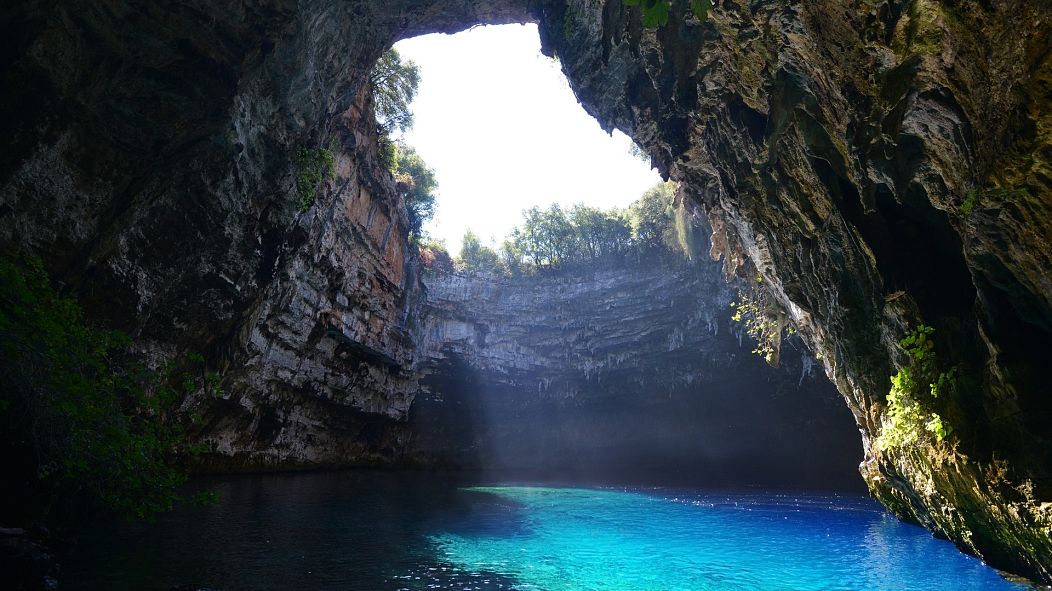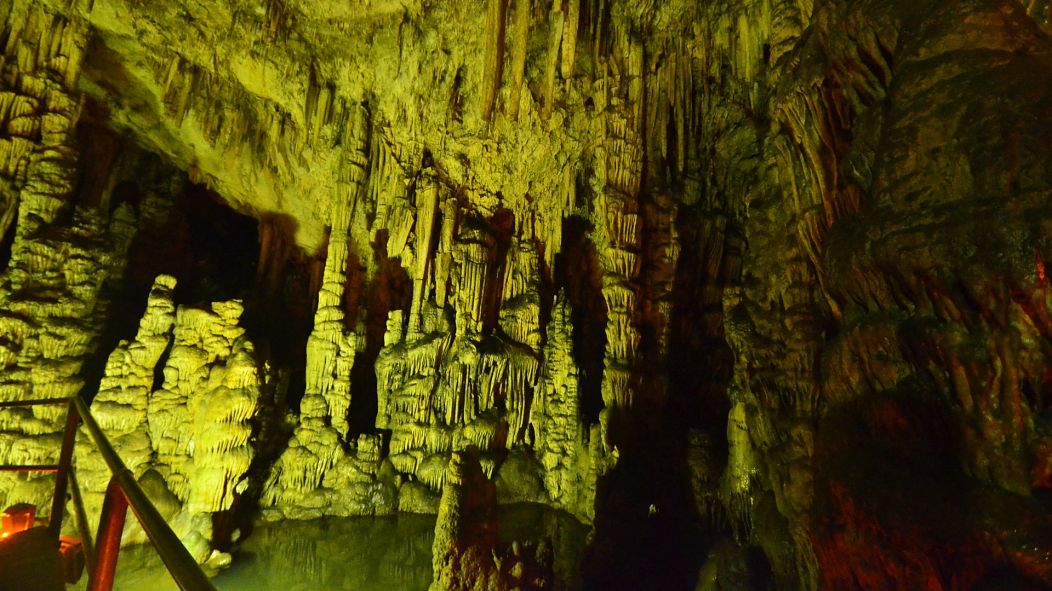I don't write enough about Hellenic tragedies (or comedies, for that matter). In fact, in nearly two hundred posts, I don't think I've gone in depth on any of the plays, besides a cursory retelling of Euripides' adaption of Mēdeia's myth. I think the reason for this is that tragedies are, firstly, an extension of the ancient rites performed in honor of Dionysos... and while I worship Dionysos as a member of the Hellenic pantheon, I am not drawn to His Mysteries and cults at all. Before I begin this post, I therefor need to give the basics of tragic, Hellenic, theater before I get get to the point of this Pagan Blog Post, namely the Year-Daímōn, or Eniautos-Daímōn.
How tragic theater came to be is unknown. It's an old practice, dating back to the earliest foundations of Hellas. What we do know is that the tradition became intrinsically linked to the the Greater Dionysia, which was celebrated in the month of Elaphebolion; around March. Tragedies were plays--usually sung in their entirety by the chorus, but later also partly spoken--which were often pitted against each other in a contest, with the price for the winner being a goat. The word 'tragus día (τραγῳδία) has its roots in the ancient Hellenic words for 'goat' (tragos, τράγος) and 'sing' (á(i)dô, ᾄδω), which, combined, would be 'song for the goat'.
The name may also stem from 'bleating like a goat' or 'bleating like a child', and indicate that the name was given to the practice to indicate that the actors threw their voice to perform the parts. There are many other explanations, and the inclusion of the goat may simply refer to a goat being sacrificed at the festivals that included the performance of tragedies, or refer to satyr-like behavior as identified with Dionysos and His following.
This satyr-like behavior was most often seen in satyr plays, which are a third form of Hellenic theater, next to comedies and tragedies. Satyr plays were based on Hellenic mythology, and were chock full of mock drunkenness, sexuality, phallic props, pranks, and general merriment. After three days of tragedies, the fourth day of the Greater Dionysia was celebrated with satyr plays.
Like satyr plays, tragedies always focussed on mythology. Favorites were the myths surrounding Demeter, Persephone, and Hades; the 'death' and 'rebirth' of Dionysos; heroes like Herakles, Ajax, and Philoktētēs; and women like Mēdeia, Helèktra, Iphigeneia, and Antigone.
Tragedies often revolved around a central theme: dark versus light, good versus evil, or other variations of the duality. They were always about making ethical decisions. They also had a central structure: Contest (agon), Tearing-asunder/death/defeat (pathos), Messenger (angelos), Lamentation (threnos), Discovery (anagnorisis), Recognition (theophany), and Resurrection (apotheosis). Not all parts had to be included, although the plays were rated higher if they were.
An example: Euripides'
Mēdeia starts after Iásōn tells her he will marry Kreousa, daughter of king Kreon of Korinth instead of her. There is a heated discussion, and Mēdeia flees to Athens, vowing to get her revenge (agon). She sends her children to Iásōn and Kreousa with an enchanted dress that kills both Kreousa and her father (pathos). A messenger runs to tell her of this event (angelos), and Iásōn grieves over the woman he has lost and his situation (threnos). Mēdeia returns to kill her two sons, and is discovered by Iásōn. Mēdeia explains her actions to the audience and Iásōn (theophany) and rises above the situation in Helios' chariot, which carries her off (a form of apotheosis). Mēdeia's play is straight-forward, without anagnorisis, something usually interpreted as a plot twist. In this case, Mēdeia knew the children were hers when she killed them. If she hadn't know, the play would have been completely different, and would probably have garnered Euripides more than third place.
With this introduction done, we can move on to the core of this post: the Year-Daímōn and its sacrifice. The Year-Daímōn is a title given to any Theos or hero, whose death and rebirth are tied to the turning of the seasons. These scapegoats 'die' with the old year and are 'reborn' with the new year, setting in motion a cycle of renewal for the plant life that forms the basis of the Hellenic food supply. Dionysos is the prime Eniautos-daímōn, but Theseus, Herakles, Apollon, Odysseus, and Orpheus qualify as well, as They are--in some way--linked closely to death and rebirth, either from visiting the Underworld and leaving it, or experiencing a 'second birth' of sorts.
To stay with Dionysos; for those unaware, there are about a bazillion stories on His birth, but two are of importance to this post. In one, he is born from Semele and Zeus, and while Semele is pregnant with Him, Hera plants seeds of doubt in her mind about the father of the child truly being Zeus. Semele asks Zeus to reveal Himself to her in his true form, and when he is left with no other option, He does so, killing her in the process. Zeus takes pity on His child, and takes Him into either His thigh or testicle, where He is eventually born from.
In the other version of the myth, stemming from Crete, Dionysos is the child of Zeus and Persephone (or Demeter). In this version, Dionysos is born, but ripped to pieces by Titans, under orders of a jealous Hera. Zeus smites the Titans, but is too late to save anything of Dionysos but His heart, which He gets implanted into His thigh like the first myth, or implants in Semele.
In both versions of the myth, Dionysos is twice-born, hence his
epithet 'Dimêtôr' (Διμητωρ). Dionysos was considered a fertility God, but also closely related to nature's eternal cycle of birth and death. The ancient Hellens considered the moment a plant--especially the grape--began to grow for the first time after being planted its first birth, and counted its second birth when it became laden with ripened fruit. As Dionysos is so closely related to to the grape vine, it was Dionysos Himself that was considered being born once from the earth and again from the vine.
Dionysos' cult focussed heavily on this part of His mythology, and during the Dionysia, this thought pattern returned heavily, especially within the context of tragedies. From Harrison's pre-Olympic themed '
Themis: a Study of the Social Origins of Greek Religion' comes the following reflection on a procession exhibited by Ptolemy Philadelphos in honour of Dionysos:
"The procession was headed by Silenoi clad, some in purple, some in scarlet, to keep off the multitude; next followed twenty Satyrs bearing lamps; next figures of Nike with golden wings; then Satyrs again, forty of them, ivy-crowned, their bodies painted some purple, some vermilion. So far it is clear we have only the ministrants, the heralds of the god to come. After these heralds comes the first real personage of the procession, escorted by two attendants. His figure will not now surprise us.
"After the Satyrs come two Sileni, the one with petasos and caduceus as herald, the other with trumpet to make proclamation. And between them walked a man great of stature, four cubits tall in the dress and mask of a tragic actor and carrying the gold horn of Amaltheia. His name was Eniautos. A woman followed him, of great beauty and stature, decked out with much and goodly gold; in one of her hands she held a wreath of peach-blossom, in the other a palm-staff, and she was called Penteteris. She was followed by four Horai dressed in character and each carrying her own fruits."
Of note are two things: the reference to Eniautos as linked to Dionysos, and the inclusion of the Horai (the Goddesses of the Seasons). Eniautos, here, is the personification of something we now identify as 'a year' but which in ancient Hellas would have been linked to any pre-defined period of time. In this case--as can be seen with the link to the Horai--the persona identified with the cycle of the seasons we deal with on earth. This procession did not take place during the (Greater) Dionysia, but it does--once more--show the link between Dionysos and Eniautos, and affirm His worship as a Year-Daímōn.
And so, the Year-Daímōn is the personification of the yearly cycle, and is superimposed on existing mythology. To stay with Dionysos--because to include the mythology of the other Theoi and heroes who were considered linked with the Year-Daímōn would make this post even longer than it already is--Dionysos' mystery cult (which eventually grew into (or branched off into) Orphism) saw Dionysos as an Immortal Theos, who took on a Khthonic form--Dionysos Khthonios (Διονυσος Χθονιος)--during the winter months. Dionysos Khthonios took on an oracular role at Delphi while Apollon was 'visiting the Hyperboreans'. Wether this was a result of, or a reason for, His link to the Year-Daímōn is unclear. So he was not 'dead' as we may understand the term, but like the ground on which nothing grew, so Dionysos lay dormant as well. From
Murray:
"The ordinary Year-Daimon arrived, grew great and was slain by his successor, who was exactly similar to him. But Dionysos did not die. He seemed to die, but really it was his enemy, in his dress and likeness, it was Pentheus or Lycurgus who died while Dionysos lived on in secret. When the world seemed to be dead and deprived of him, he was there in the ivy and pine and other evergreens; he was the secret life or fire in wine, or other intoxicants. By this train of ideas Dionysos comes to be regarded not as a mere vegetation-spirit, or Year-Daimon, but as representing some secret or mysterious life, persisting through death or after death."
King Lycurgus of Thrance, to clarify, was a mythical figure, who bitterly opposed Dionysos' new religion. After a first encounter, Dionysos retreated into the sea, only to come back and imprison Lycurgus in a rocky cave. Dionysos planned to let him reflect and learn from his mistakes, but Zeus did not care to have the Gods insulted, and blinded, then killed Lycurgus.
More telling; Pentheus was the king of Thebes, and cousin to Dionysos. Pentheus did not believe Dionysos was a new Theos, and ordered His drunken and loud following imprisoned. Dionysos freed them and He tried to explain His worship to His cousin. Yet, Pentheus would not listen, so Dionysos left him to his anger. He took His followers--including many local women, including Pentheus' mother and sister--to the hills. When Pentheus pursued Him, He drove the women mad. To them Pentheus appeared to be a moutain lion. In a berserk rage, they attacked him, and his mother--who was first to reach him--ripped his head off, while the others tore off his limbs.
This myth reach back to much older--possibly pre-Hellenic--'primitive' tribes which worshipped Dionysos or a God similar to Him with animal and human sacrifices which were torn apart, either before they were killed, or as a means to kill them. The God worshipped this way was also a God of life and death, and these sacrifices were conducted to ensure a good harvest in the coming year. This is the very same culture mentioned in the second paragraph as having founded the basics of tragic plays. This may also explain one of the retellings of the birth of Dionysos where He was torn apart by Titans.
How involved the worship of the Eniautos-Daímōn was, or how far-spread it was, is unclear. Sacrifices for a good harvest were very common, and it's not odd to imagine that the 'first birth' would have fallen somewhere around the Greater Dionysia (as it was celebrated roughly around the Spring Equinox). If all sacrifices to the Year-Daímōn were linked to Dionysos is also unclear, although He did play a huge role in the formation of the ritual style, which often included ecstatic rites brought on by wine, dancing and other aids.
For (Neo-)Pagans reading this, the Year-Daímōn seems to be a reflection of the Horned God's yearly cycle, and there are definitely similarities. The cycle of non-death and rebirth can be found in many Gods throughout the pantheons. Immediately to mind comes Osiris, but also Shiva. The two may, indeed, be linked and as an Eclectic-turned-Recon, it would be easy for me to superimpose the mythology of the Horned God onto Dionysos (and for non-Recons to do it the other way around). But the differences are glaring--as I hope I have explained with this post--and as easy as it would be to
link Christmas to the Lesser Dionysia, or the Greater Dionysia to a fertility festival like Ostara, at their base, neither is true.
The Year-Daímōn is a spirit of growth, or renewal, and of life's continuation. Different but the same, every year--year in, year out. The Eniautos-Daímōn formed the basis of life for a civilization which relied heavily on agriculture for survival, and to see homage and sacrifice in his name during major festivals is hardly surprising. If the cycle stopped, so did life. And so, the Year-Daímōn's worship continued on and the Hellens were rewarded. Just one more thing to think about now the Lesser Dionysia is nearly upon us and the Greater Dionysia's is coming only a few months away.












